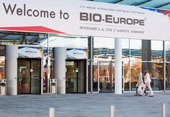
Bionest attended BIO Europe in Munich last month and witnessed firsthand the flurry of deal making activity. In many ways 2015 has been a landmark year for deal making. Companies big and small have made headlines, striking deals across every corner of the industry and for myriad reasons ranging from combination collaborations to the recent Pfizer-Allergan mega-merger.
BIO Europe set a record this year for attendance and partnering productivity, according to the EBD Group. And we certainly experienced that – the exhibit halls and partnering areas were packed from start to finish.
Many of our conversations with BD execs naturally turned to deal making in immuno-oncology, an area that has been top of the list this year. Small IO companies were looking for larger partners, big pharma was on the lookout for innovation and novel targets, and even non-IO oncology companies were looking to combine their assets with IO. The same question was echoed by most people we spoke with: how can we make sense of this deal-making frenzy and how should we decide, among the thousands of possibilities, with who and what to combine?
Immuno-oncology was not the only topic on the table, however. A core business area for the Bionest team deals with ex-US strategy for US-based biotechs, often addressing the question of whether and how to partner or go it alone in Europe and rest of the world. BIO EU certainly provided a fertile environment in which to discuss this matter, which offers different advantages and challenges for companies depending on the particular product and direction they chose to go. While the expense and risks of entering the European markets alone can be considerable, the rewards are substantial and the challenges not insurmountable for a smaller company, especially for those developing orphan drugs.
Lastly, the topic of cell therapy and regenerative medicine was a major theme this year, appearing in panels, company presentations, and our own meetings. Cell therapy brings us closer than ever to potential cures and presents an opportunity to transform certain areas of medicine. However, with these opportunities come challenges and uncertainties for companies as they develop and plan to commercialize these therapies. Companies will need to build unique capabilities to manage the development, manufacturing, and ultimate commercialization of these types of therapies. We heard many of these questions raised during the course of our discussions: What do we need to do differently to make cell therapy a reality? What manufacturing and distribution model do we need? Can we build this or should we partner? What is the commercial model for a one-time treatment that might generate a cure? How will payers react? It’s early days yet, but it’s clear from our time in Munich that the time is now for companies to start planning and answering these questions.
We are looking forward to continuing these conversations and would love for you to get in touch if we missed meeting with you at BIO EU.